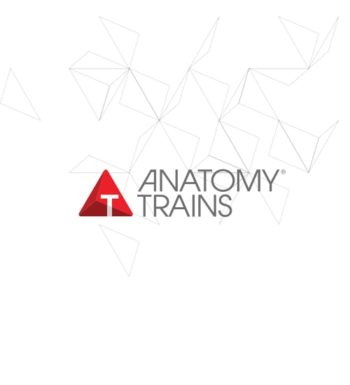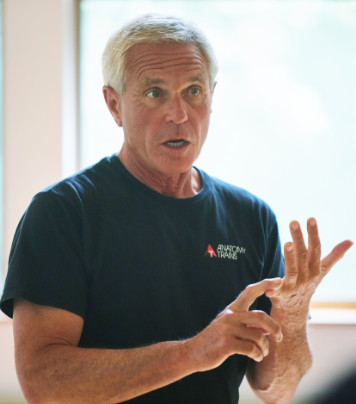Presented by Kieran Schumaker
Thank you for your interest. Registration for this bundle is now closed. Please email info@anatomytrains.com with any questions.
Note: To ensure a high quality student experience, registration will close on Friday, November 5th at 8PM EDT.
By purchasing this product, you will have access to both the November 6th and 13th webinars at a bundle discount. Both webinars are also available for purchase separately.
November 6: Movement-Based Neurovascular Release for Lumbosacral Stability: A self-treatment approach for improving support and mobility
Part of the We’ve got your back: Stability and Freedom through Neurovascular Release series.
In this two-hour webinar for manual and movement therapists, Kier will guide you in using a ball in conjunction with sequenced leg and spinal movement to free up the vascular supply to back muscles, reducing local hypertonicity, and releasing constriction of dorsal cutaneous nerves. Kier will teach you to explain from a neurovascular perspective how lower extremity tension produces back tension, and also how lower extremity tension can be used to your advantage when applying this back release strategy.
You will come away with new tools and strategies to share with your clients, and you will feel greater support and freedom throughout your back. (Note for yoga practitioners and flexible people, please do not stretch out before class! We will use your lower extremity tension productively to help us target specific areas along the spine.)
In this class you will
- Improve spinal movement in all three planes
- Reduce protective holding or “splinting” associated with a chronically stiff back
- Help your client find greater stability and control when balancing on one leg
- Improve your client’s sense of safety and security if they feel vulnerable in the low back during spinal flexion and extension
- Reduce compression in the lower thoracic and lumbar spine to allow the intervertebral discs to “fluff up” and regain some height
- Improve psoas strength and psoas-piriformis balance
- Help a client to sit more comfortably with an upright spine
- Reduce the pain and protective response in a historically injured hip
Props needed:
During class, we will be working on a yoga mat on the floor and against a wall.
A tennis ball or similar-sized ball is needed for this work. (Ideally you will have an old “flat” tennis ball or children’s tennis ball with lower pressure.)
Additional props you will need:
- a few small couch pillows or bed pillows
- a broom or mop handle or a non-rolling chair.
(People who have taken the Movement-Based NVR Online Level 1 during the COVID year have already learned
this approach—If you have studied this ball work online with Kier, it will be a repeat for you, and you will want to just take the second webinar.)
Note: If you cannot attend this course live, each session will be recorded and the recording made available to all registrants for 45 days.
To ensure a high quality student experience, registration for this class will CLOSE on Friday, November 5th, at 8 PM EDT.
Schedule:
Saturday, November 6: 11 AM – 1 PM EDT
November 13: Manual Neurovascular Release for Lumbosacral Stability: spinal erectors and the posterior and lateral pelvis
Part of the We’ve got your back: Stability and Freedom through Neurovascular Release series.
This webinar can stand alone or, if you took the November 6th webinar, you can refine the skills and understanding you gained while working on yourself, this time working on someone else’s spinal erectors, rib cage, and lateral hips. (One of your lucky family members can benefit from the live instruction if you keep them nearby while you are learning anatomy and then enlist them as your model during the technique instruction.)
Again, your client will experience greater freedom in spinal movement during left and right side-bending, along with less low back vulnerability and stiffness. The work we do for the pelvis and lateral hips will improve balance and coordination when standing on one leg and will help address pelvic torsion.
You will need to be able to work with your model lying supine and on their side, with several small couch pillows or bed pillows available for props. Working on a massage table will be the easiest, but you could improvised on the floor or kneeling next to a futon bed. You do want to choose a fairly firm surface, not a conventional bed.
No previous manual therapy training required for the work we are doing with spinal erectors—Kier will provide the anatomy and palpation instruction you need. More advanced palpation skills will be helpful for the work we are doing in the lateral hip.
In this class you will
- Improve spinal movement in all three planes
- Reduce protective holding or “splinting” associated with a chronically stiff back
- Help your client find greater stability and control when balancing on one leg
- Improve your client’s sense of safety and security if they feel vulnerable in the low back during spinal flexion and extension
- Reduce compression in the lower thoracic and lumbar spine to allow the intervertebral discs to “fluff up” and regain some height
- Improve psoas strength and psoas-piriformis balance
- Help a client to sit more comfortably with an upright spine
- Reduce the pain and protective response in a historically injured hip
You will need a client or volunteer bodywork model to get the most benefit from this class
Note: If you cannot attend this course live, each session will be recorded and the recording made available to all registrants for 45 days.
To ensure a high quality student experience, registration for this class will CLOSE on Friday, November 12th, at 8 PM EST.
Schedule:
Saturday, November 13: 11 AM – 1 PM EST


